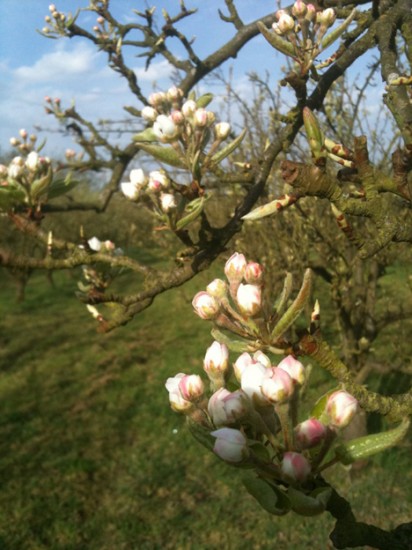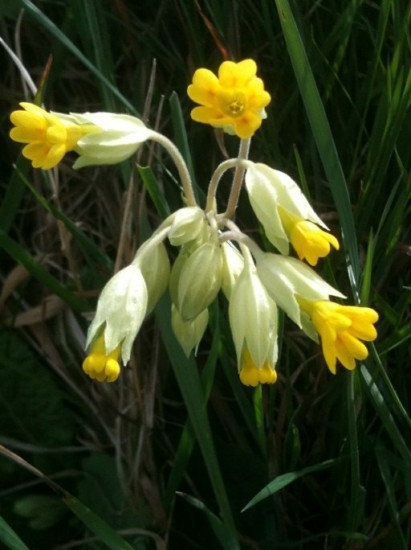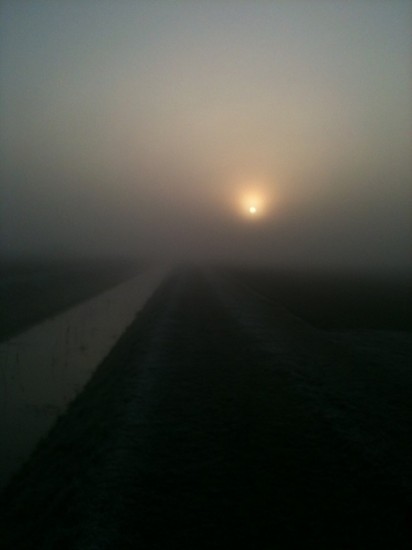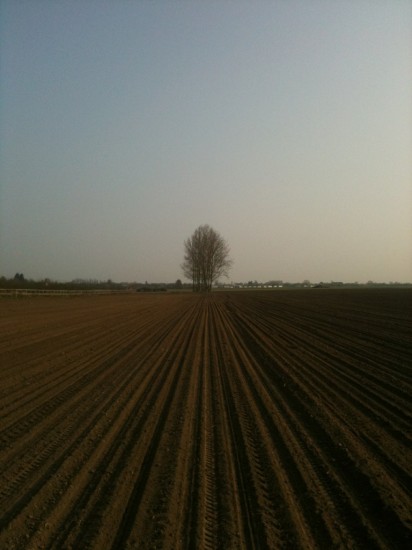‘Words on Water’ illustrator, John Richardson, has upped sticks and moved east. Here’s how he’s getting on:
Mad March Days
Well, March came in like a lion and went out quieter but still blowing and roaring in the poplar trees. No rain all month, well no rain that registered on the gauge anyway, and cracks appearing in the garden, the farmland and riverbanks. The driving experience early in the month reminded me of the John Masefield poem ‘Cargoes’, the one poem people of a certain age all learnt at school and still remember: ‘Dirty British Coaster with a salt-caked smokestack butting through the Channel in the mad March days’. Driving across the Black Fen near Welney, swooping up and rolling down the crests and bumps on the fenland byways in a howling gale took me right back to English literature classes at school. However, we were carrying flour from the mill not cheap tin trays, Tyne coal and pig lead.
The farmland has, in places turned into a Buddhist garden, the newly ploughed land has been harrowed, rolled and drilled into complex geometric patterns with only the skyline, pigeons and rooks breaking-up the symmetry. Even the spring wheat is shooting up in neat lines and standing to attention. Some mornings there is a layer of hoar-frost right on the top of the ridges on others a thick mist. During the day, as the dew fall dries out, the tractors disappear into a dust cloud as they work, with just a brief glimpse of red, blue or bright green paintwork in the sunlight to identify the manufacturer.

In the orchards the plum trees are in full blossom, soon to be followed by the pear and apple trees. In the hedgerows and at the edges of fields primroses and cowslips are splashes of cheery pale yellow. Meanwhile out in the middle of the fields we have seen a pair of hares boxing while a third watches waiting his chance to woo the female and then get a clip round the ear for his amorous advances.
The warming temperatures seem to have given all the plants and insects a sense of urgency and purpose. While planting the garlic and shallots in the middle of the month the accompaniment was the buzzing of hoverflies and bumble bees and the sight of quite a few butterflies. Close your eyes and you could almost have been tench fishing in June, the sun was certainly bright enough.

Generally the fieldfares and redwings have departed with just a few gathering in the poplars and alders but during the month we have seen woodcock, snipe and a growing number of peewits. Walking the dogs early one morning two pairs of scribblers, yellowhammers really, (we called them scribblers as children because of the way their eggs are decorated), were darting in and out of the alder hedge along with a pair of blackcaps. The usual suspects are still around of course including the noisy house sparrows nesting under the eaves in last year’s house martin’s nests. They do make a racket for such small birds.
Airborne we have the comical sight of rooks wobbling across the sky carrying twigs for their nest building that almost match their wingspan. Meanwhile the starlings bustle around looking as if they are trying to emulate aeroplanes towing a message banner along behind them, but in their case the banner is a length of grass or reed way out of proportion with their overall size. In a dense hawthorn bush a magpie’s nest that is mostly twigs is highlighted with blue plastic, red baler-twine and bits of white carrier bag. The finished article looks like cross between a bouffant hair-do (with highlights) and a giant basket.
One of the treats of the month was turning a corner round the side of an old Nissen Hut to see a piece of ‘wood’ about the size of a thrush fly up and drop down to the bare earth in the field about six yards from me. Closer inspection revealed a pair of huge yellow eyes watching me from ground level. Then the shape gradually revealed itself as a little owl which flew round the Nissen Hut and back inside through the open door. Being of World War 2 vintage the hut is a double skinned structure and the owls have made the their nest in the roof space cavity. Had I looked harder I would have seen the pellets of fur and bone on the floor of the hut that would have given me a clue.
March had one dark day, Monday the 15th, the last day of the fishing season. The day was celebrated by a visit from ‘Andrews of Arcadia’ who joined me for the final pike fishing expedition of the season. A hearty ‘full English’ and cups of tea preceded the trip to the river bank where there was a lot of talk and the pike were conspicuous by their absence. How typical as a last day but at least the opening day of the season was meticulously planned. I will cut some new swims in the reeds, plumb the depth and pre-bait them for a week, then we will arrive before dawn for the magic first cast. Is this casting the runes if not a quill? On opening day we will definitely catch some tench, I have seen them there, big ones, but then I have seen pike there too.
I have heard that there are sea trout in the Great Ouse and throughout the Norfolk tidal rivers and a friend told me about one that he caught while it was stranded in a tidal drain near his home. He doesn’t fish but he lifted it out in a borrowed landing net and returned it in deeper water to send it on its way. The weight? Well it’s got to be at least 10lbs and what a tail.
Last Sunday Sue and I were going to build a hide and saw, in the dyke, a bizarre sight. Floating on the surface was a dead rat, fur bleached white, that had been in the bottom of the dyke since October. Around and on the corpse were seven toads having a ‘Barry White’ moment!
They were still at it two days later. Barry would have been proud and impressed!
Click here to read John’s previous letters from Zanderland
John at The Two Terriers Press

